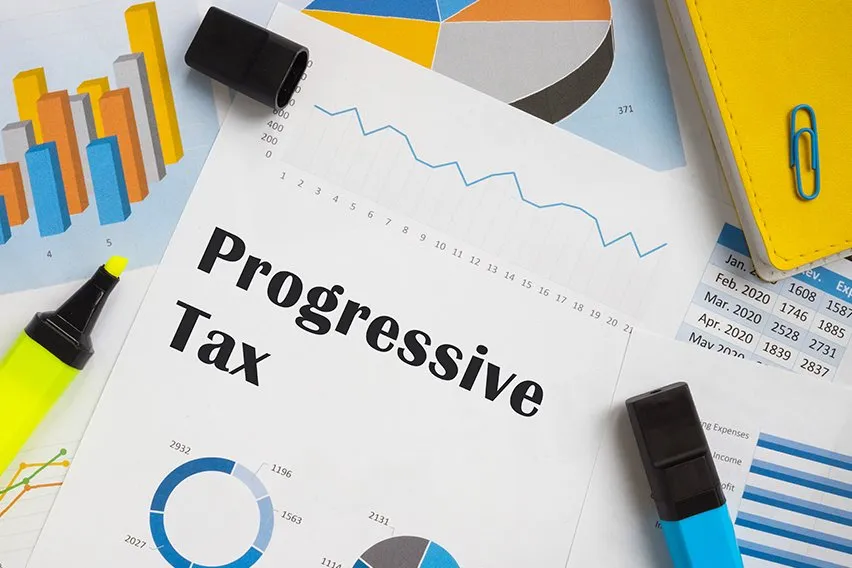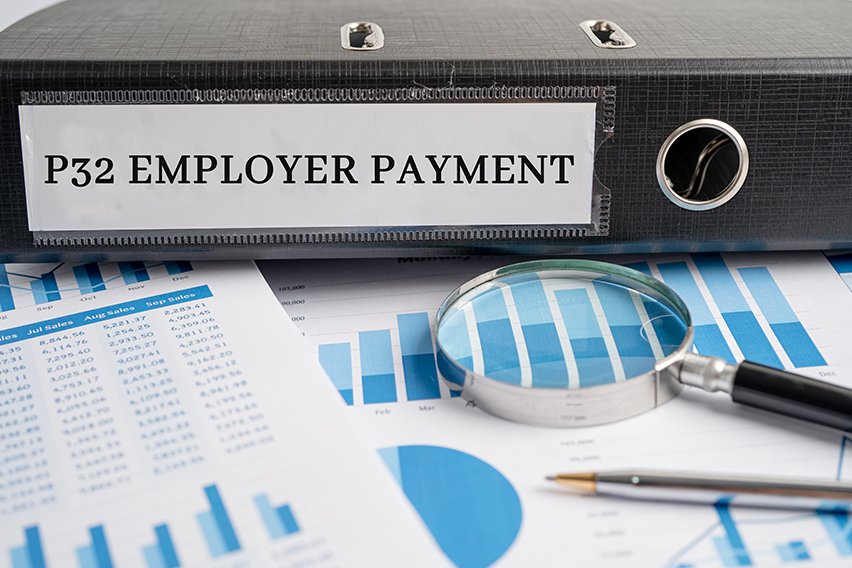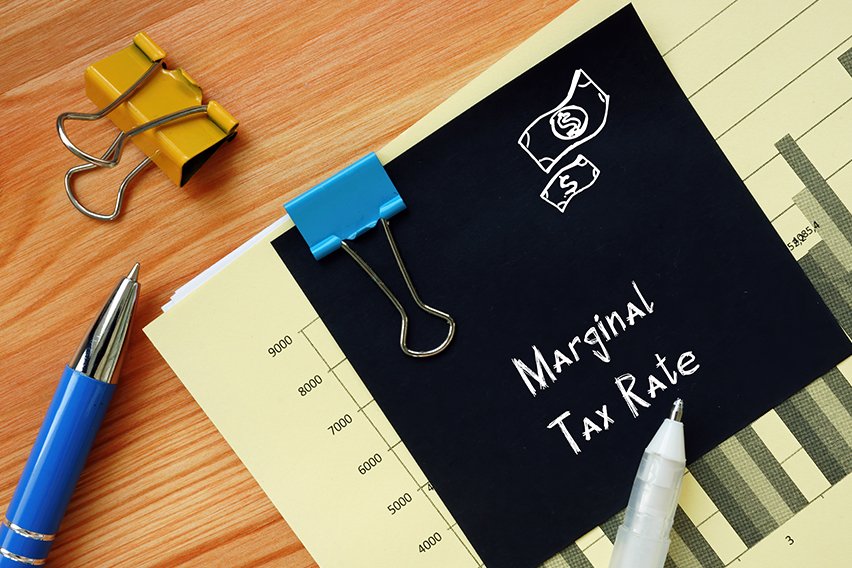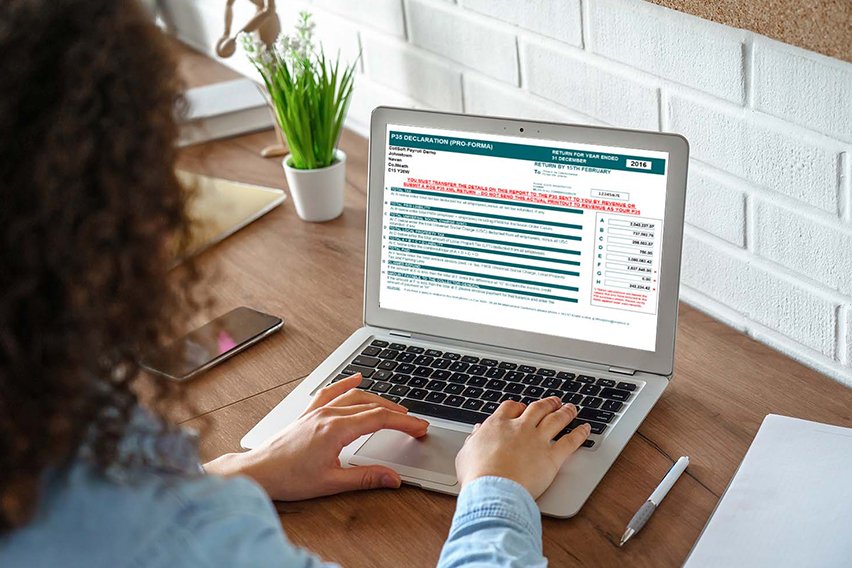Progressive Tax: Definition, Examples & How It Works

What are progressive taxes? No, not that kind of “progressive”!
What do accountants and financiers mean when we say “progressive tax system”?
We’ll discuss the term progressive tax in a finance context and how it works in the real world UK tax system.
Here’s What We’ll Cover:
- What Is Progressive Tax?
- How Does Progressive Tax Work?
- Income Tax Rates in the UK
- Progressive Tax Example
- Progressive Tax vs Regressive Tax
- Key Takeaways
What Is Progressive Tax?
Progressive taxation is not a value judgement. It means that higher-income individuals are taxed at a higher rate than lower-income individuals.
Progressive income taxes are based on your ability to pay. It’s to try and achieve greater economic equality in society. We have progressive tax policies in the UK. That means taxing the richest in the country and providing tax credits to low-income earners.
There are different income tax brackets that everyone falls into. As you climb up the tax brackets, your tax rate increases.
Of course, there are income tax credits to think about too. A lower-income person has more access to tax deductions than a higher-income person.

How Does Progressive Tax Work?
This system can be a little complex to get your head around at first. It sounds like if you are a certain amount, then 100% of your income is taxed at that rate. That’s not how it works. It’s a little more sophisticated than that.
To give you a meaningful example, let’s first define the current tax brackets in the UK for 2024/2025. Always refer to the HMRC for the most up-to-date income tax rates.
Income Tax Rates in the UK
We have 4 tax bands in the UK.
|
Tax Band |
Taxable Income |
Tax Rate |
|
Personal Allowance |
Up to £12,570 |
0% |
|
Basic Rate |
£12,571 to £50,270 |
20% |
|
Higher Rate | £50,271 to £125,140 |
40% |
|
Additional Rate | over £125,140 |
45% |
Now you’d be forgiven for looking at this table and thinking
So if I earn £13,000, I need to pay 20% of that in income tax?!
No, not at all. Essentially, each section of your income is taxed differently.
The UK tax system has a standard deduction called a personal allowance. The personal allowance of £12,570 is eligible for everyone when they earn less than £125,000 in annual income. That is every person has £12,570 of tax-free income.
From there, the level of income you make is taxed on a sliding scale. That is a progressive tax rate.
Progressive Tax Example
Let’s say Person A makes £20,000 in annual income.
£12,570 is tax-free income.
The remaining amount is taxed in the second tax bracket.
£20,000 – £12,570 = £7,430
Therefore, £7,430 is taxed at 20%.
£7,430 x 0.20 = £1,486
Person A pays £1,486 in income tax.
As a final example, Person B earns £100,000 in annual income.
£12,570 is tax-free income as it was for Person A. This is because Person B earns less than £125,000.
The amount up to £50,270 is taxed at the next bracket.
£50,270 – £12,570 = £37,700
£37,700 of the total income is taxed at 20%.
£37,700 * 0.20 = £7,540
Set that amount aside, and let’s calculate the next tier.
£50,270 to £125,140 is taxed at 40%. But Person B only earns £125,000.
£100,000 – £50,270 = £49,730
£49,730 is taxed at 40%
£49,730 * 0.40 = 19,892
Let’s add up the total tax calculations.
£7,540 + £19,892 = 27,432
Therefore, Person B pays £27,432 in income tax.
If you want to calculate your own income rates, try the Money Saving Expert income tax calculator.

Progressive Tax vs Regressive Tax
Progressive tax puts a larger share of taxes on the richest in the country. A regressive tax system is the opposite. It places the largest tax burden on the lowest income earners. Therefore, high income earners in the country pay the least tax.
Countries adopt progressive tax as economic policy to rebalance the distribution of wealth.
Key Takeaways
A progressive tax system enables low-income earners to keep more of their earnings to support themselves. The UK runs a progressive tax system where the highest tax burden is on the highest income earners.
Did you find this tax accounting guide helpful? Check out our resource hub for more UK tax content.
More Useful Resources
RELATED ARTICLES

 How to Reduce Corporation Tax: 8 Ways
How to Reduce Corporation Tax: 8 Ways What Is a P32 Employer Payment Record?
What Is a P32 Employer Payment Record? What Is Input Tax (Input VAT)? A Tax Guidance
What Is Input Tax (Input VAT)? A Tax Guidance Claiming VAT on Mileage Expenses
Claiming VAT on Mileage Expenses What Is the Marginal Tax Rate? How Much Tax Do You Pay
What Is the Marginal Tax Rate? How Much Tax Do You Pay What Is a P35 – Payee Annual Return?
What Is a P35 – Payee Annual Return?